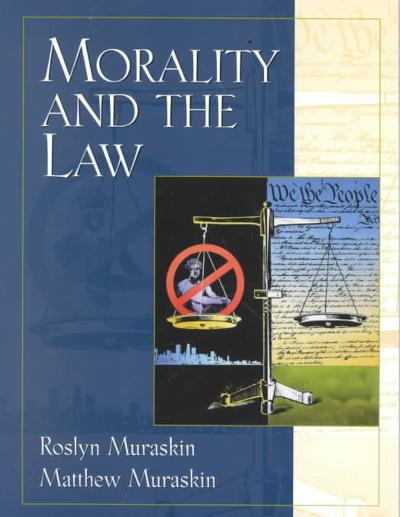Question
QUESTION 6 Maeve was late for class at Whitman and slipped on water on the hallway floor that had been carelessly spilled 5 seconds earlier
QUESTION 6
Maeve was late for class at Whitman and slipped on water on the hallway floor that had been carelessly spilled 5 seconds earlier by another student. Maeve injured her back in this fall. The student who carelessly spilled the water is employed part time by SU in food service but was not working for SU at the time she spilled the water that caused Maeve's fall. Maeve sued SU for negligence and strict liabilty. Based on the facts set forth in this question---which of the following is TRUE
| 1. | SU is likely liable to Maeve based on a theory of negligence. | |
| 2. | SU is likely liable to Maeve based on the theory of strict liability. | |
| 3. | SU is likely not liable to Maeve for this accident under any theory of liability and will likely be granted summary judgment and the lawsuit will be dismissed as against SU. | |
| 4. | SU is likely liable to Maeve based on the theory of respondeat superior. |
QUESTION 7
Assume Elon Musk and Twitter went to trial and Twitter won the trial and the judge ordered Elon Musk to act to proceed with the purchase of Twitter by reason of his obligation under the contract with Twitter---which of the following is TRUE?
| 1. | Twitter is being awarded legal relief and not equitable relief. | |
| 2. | Elon Musk failed to meet his burden of proving beyond a reasonable doubt that he had no obligation to go forward with his contract obligation to purchase of Twitter. | |
| 3. | Elon Musk failed to meet his burden of proving by a preponderance of the evidence that he had no obligation under the contract to go forward with the purchase of Twitter. | |
| 4. | Elon Musk was found to be "strictly liable" to Twitter. |
QUESTION 8
Jack negligently drives his car on Marshall Street in Syracuse and hits and injures Maeve. Jack resides in New Jersey. Maeve resides in Alaska. Maeve sues Jack for negligence in state court ( a court of general jurisdiction) in Alaska. Jack has never set foot in Alaska and does no business in Alaska. Which of the following is FALSE:.
| 1. | The state court in Alaska has no subject matter jurisdiction over a negligence lawsuit that involves an auto accident. | |
| 2. | The state court in Alaska has personal jurisdiction over Maeve because she brought the lawsuit in Alaska and by doing so has consented to the court's personal jurisdiction over her. | |
| 3. | The state court in Alaska has personal jurisdiction over Jack. | |
| 4. | Maeve could have sued Jack in a state court in New Jersey where Jack resid |
QUESTION 9
Sonu went to play a pick up soccer game with some friends. While playing the soccer game, a fellow player thought they could steal the ball from Sonu with a slide and attempted to do so. The fellow player miscalculated and carelessly slid into Sonu with too much speed/force. The fellow player hit Sonu's ankle causing Sonu 's ankle to fracture. The fellow player felt terrible for having caused this injury. Rather than wait for the ambulance the fellow player decided to lift Sonu up into her arms and carry Sonu to the parking lot where the ambulance was expected to arrive. In lifting and carrying Sonu, the fellow player carelessly dropped Sonu causing her to fracture her wrist.There was no good or medical reason for the fellow player to lift and carry Maeve. The fellow player just thought it was the right thing to try to do. Which of the following is TRUE:
| 1. | Sonu likely has a valid negligence claim against the fellow player for the fracture to her wrist. | |
| 2. | Sonu assumed the risks of playing soccer and the fellow player should not have to pay any money for the injury to Sonu's wrist or ankle. | |
| 3. | The fellow player is likely to be strictly liable to Sonu for the injury to her wrist. | |
| 4. | Sonu likely has a valid negligence claim against the fellow player for the fracture to her wrist and the fracture to her ankle. |
QUESTION 10
Which of the following is TRUE?
| 1. | Comparative fault is the plaintiff's fault or negligence in causing or in contributing to causing their own accident. | |
| 2. | Anytime a plaintiff is injured in driving a car, a percentage of negligence will ALWAYS be assigned to the plaintiff based on the concept of "assumption of risk." | |
| 3. | The plaintiff's negligence in causing or in contributing to causing their own injury is known as "voir dire." | |
| 4. | In a lawsuit claiming negligence where there is evidence that the plaintiff was negligent in part for causing their own accident and where there is evidence that the defendant was negligent in part for causing the accident to plaintiff--- the jury will have the right or power to assign a percentage of negligence to each party and it does NOT need to add up to 100 % |
Step by Step Solution
There are 3 Steps involved in it
Step: 1

Get Instant Access to Expert-Tailored Solutions
See step-by-step solutions with expert insights and AI powered tools for academic success
Step: 2

Step: 3

Ace Your Homework with AI
Get the answers you need in no time with our AI-driven, step-by-step assistance
Get Started


